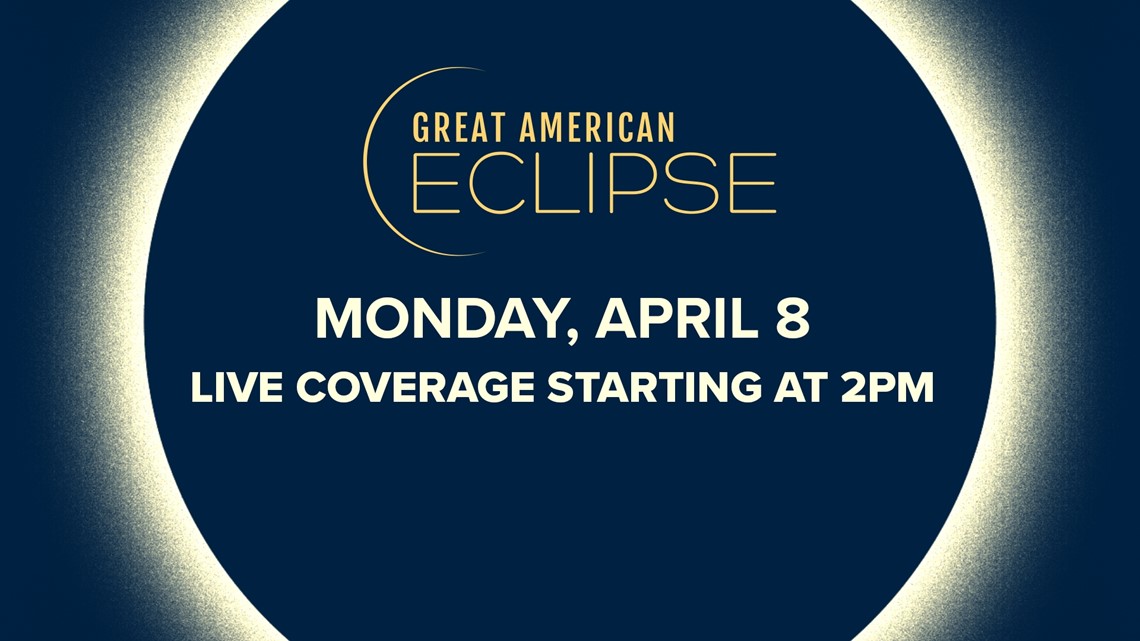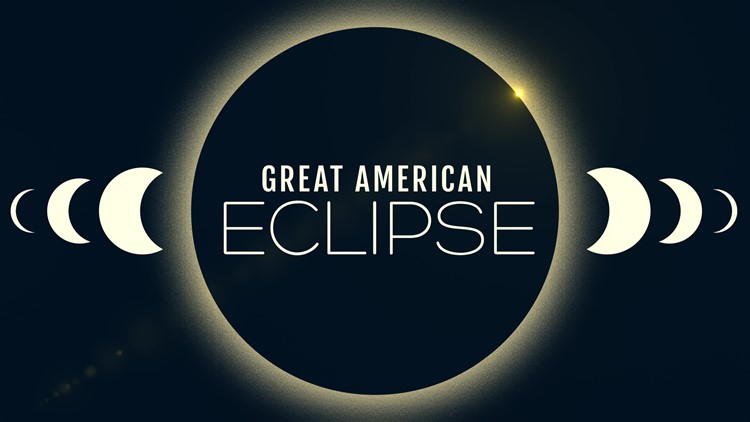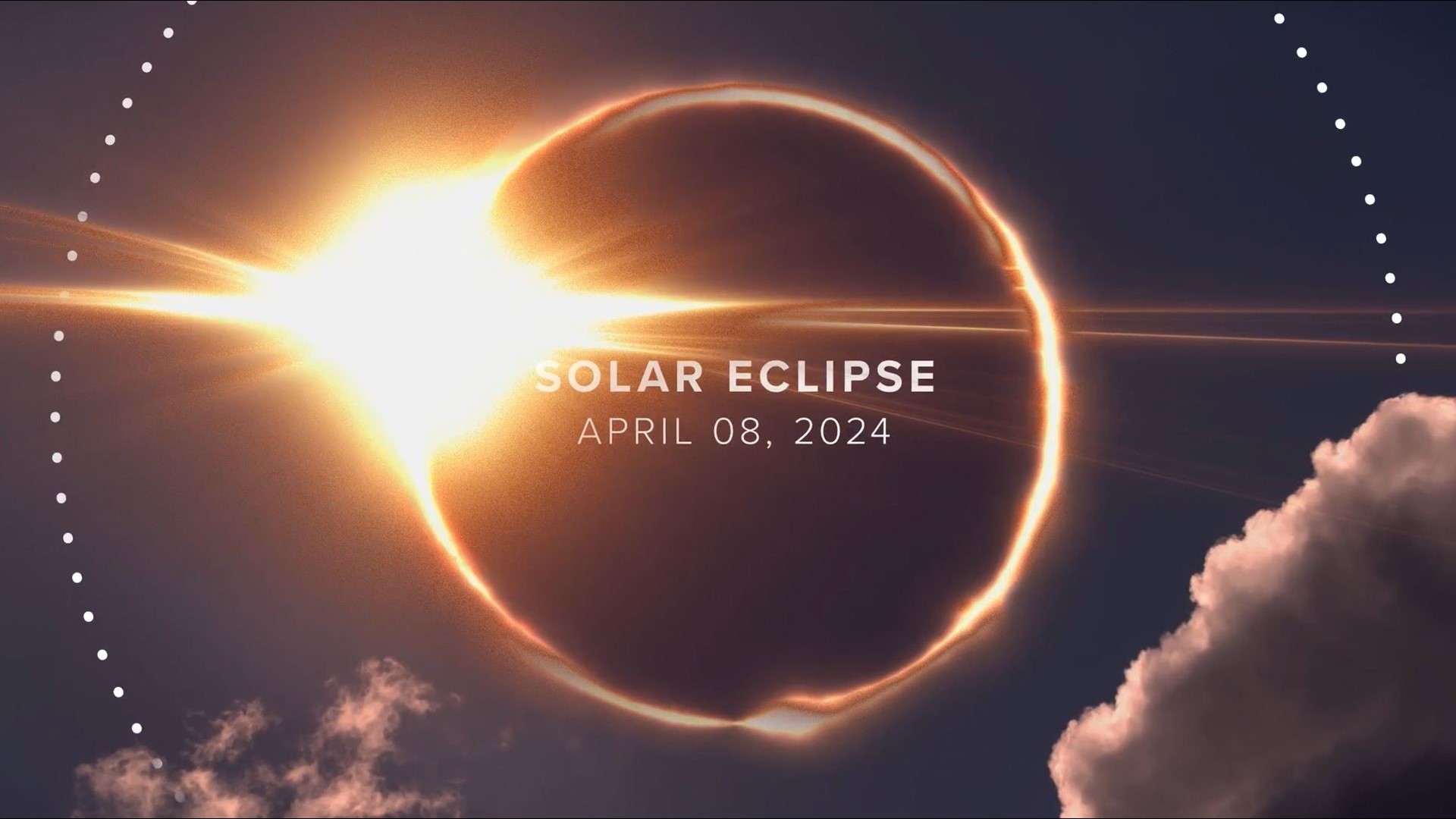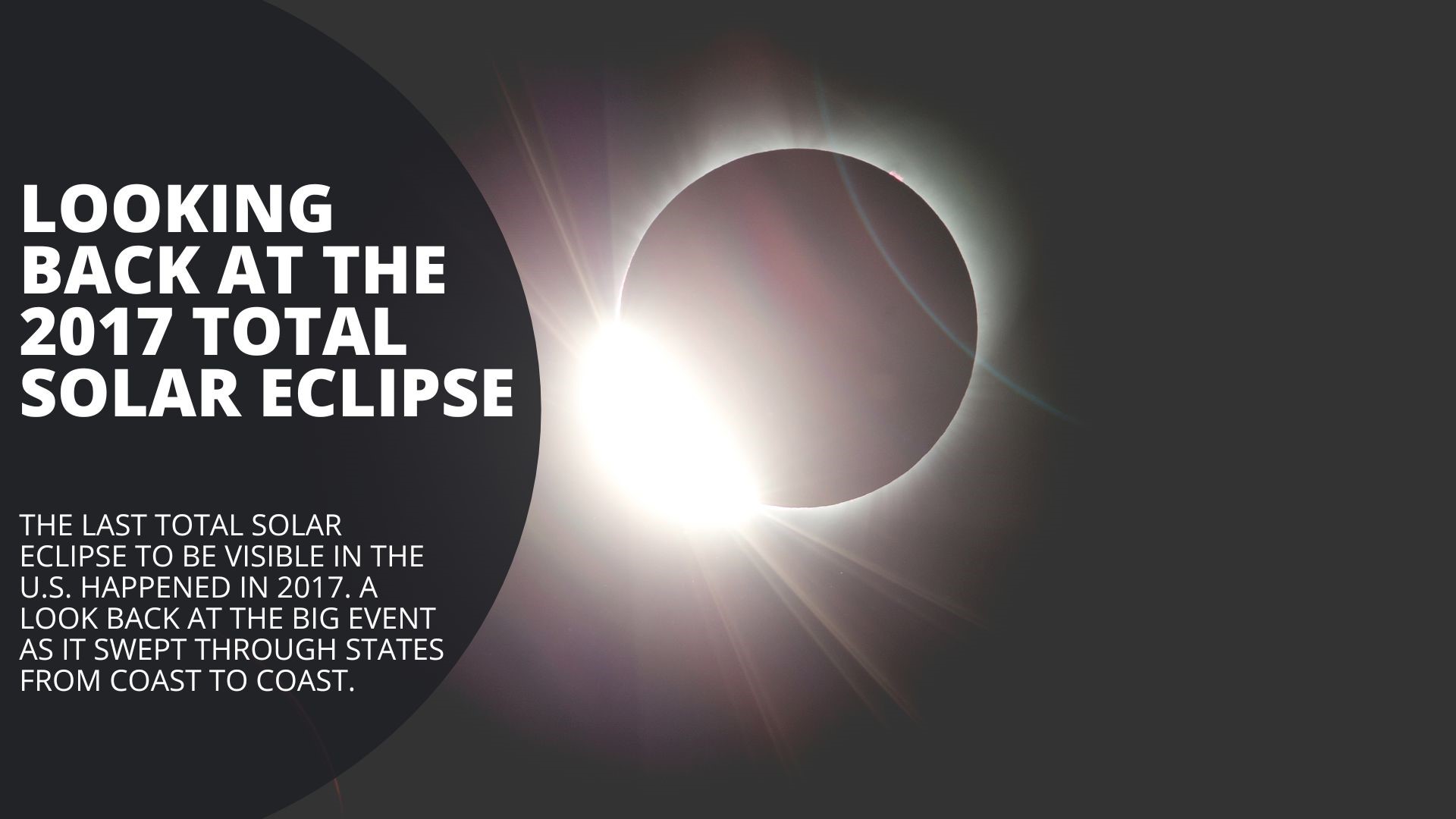COLUMBUS, Ohio — North America is on the verge of another masking of the sun.
Monday’s total solar eclipse will make landfall along Mexico’s Pacific coast and cross into Texas and 14 other U.S. states before exiting over Canada.
The moon will cover the sun, blocking sunlight for up to to 4 minutes, 28 seconds, depending on location.
Ohio will begin to see the partial eclipse just before 2 p.m. and it will end around 4:30 p.m. The total solar eclipse will begin around 3:10 p.m. for several communities and end around 3:14 p.m. with a maximum viewing time in Ohio just under four minutes.
Live coverage of the eclipse
On Monday, April 8, 10TV News will have live views of the eclipse as it makes its way across the country, as well as updates from events throughout Ohio.
Starting at 2 p.m., watch 10TV's "Great American Eclipse" 2-hour special, providing last-minutes viewing, safety and travel tips before totality begins.
Where we'll be
- COSI: Anchor Yolanda Harris and reporter Collin Dorsey
- Logan County - Indian Lake State Park: Chief Meteorologist Jerry Martz
- Dublin - Riverside Crossing Park: Sports anchor Dom Tiberi
- Powell - Columbus Zoo and Aquarium: Reporter Carla Rogner
- Cleveland - Progressive Field: 10TV Sports reporter Adam King
How to watch
Catch our live coverage on: 10TV, the free 10TV mobile app, 10TV.com and 10TV+ — our free streaming app available on Roku, Amazon Fire TV and Apple TV. In fact, we'll have eclipse-themed programming on 10TV+ all morning and afternoon leading up to the 2 p.m. special.


More to know about the eclipse
What's a total solar eclipse?
The moon will line up perfectly between the Earth and the sun at midday, blotting out the sunlight. The full eclipse will last longer than usual because the moon will be just 223,000 miles (360,000 kilometers) from Earth, one of the year’s closest approaches. The closer the moon is to Earth, the bigger it is in the sky from our perspective, resulting in an especially long and intense period of sun-blocked darkness. Totality will last the longest over Mexico at 4 minutes, 28 seconds. Elsewhere along the track, like in Syracuse, New York, totality will last just 1 1/2 minutes.
What's the eclipse path?
The moon’s shadow will slice a diagonal line from the southwest to the northeast across North America, briefly plunging communities along the track into darkness. Totality will enter the continent at Mazatlan, Mexico, and exit at Newfoundland in Canada. In between, 15 U.S. states from Texas to Maine will experience totality, including snippets of Tennessee and Michigan. It will be a repeat for Cape Girardeau, Missouri, and Carbondale, Illinois, which were also in prime position for 2017’s total solar eclipse.
A comet during the eclipse?
During totality, you may be able to spot a comet along with four planets, if you’re lucky. Jupiter will be to the left of the sun and Venus to the right. Saturn and Mars will be to the right of Venus, but fainter. The solar system’s three other planets will be in the vicinity, but virtually impossible to see with the naked eye. Comet 12P/Pons-Brooks is swinging past Earth, as it does every 71 years. Still faint, it will be positioned near Jupiter during the eclipse. But it will take a sudden outburst of dust and gas to see this so-called devil comet without a telescope, according to Anita Cochran of the University of Texas at Austin. But don't waste time looking for it. “There is lots to see and not that long a time," she said via email.
Last total solar eclipse in the U.S.?
The U.S. hasn’t experienced a total solar eclipse since Aug. 21, 2017, although a “ring of fire” solar eclipse crossed a part of the country last October. The moon was too far away then to completely blot out the sun, leaving a brilliant, burning ring around our star. The dramatic “ring of fire” stretched from Oregon to Texas, and crossed over Central America and Colombia, before exiting over Brazil. Kerrville, Texas, just west of San Antonio, is back in the bull’s-eye and expecting another packed house.
When's the next one?
After Monday, the next total solar eclipse won’t occur until 2026. But it will graze the top of the world, dipping into Greenland, Iceland and Spain. The next one in 2027 will march across Spain and northern Africa, with totality lasting an incredible 6 1/2 minutes. North Americans will have to wait until 2033 for another total solar eclipse, but it will be limited to Alaska. In 2044, Western Canada, Montana and North Dakota will have front-row seats. And in 2045, the U.S. will once again experience a coast-to-coast total solar eclipse.





